What I Buy and Why
Architect Lee Mindel Designs Light-Filled Modern Residences Perfect for Showcasing Art Collections, Including His Own
He mostly acquires modern and contemporary art. South African ceramicist Zizipho Poswa is a current favorite.

As co-founder of the architecture firm Shelton Mindel, Lee Mindel has built a career designing gallery-like residences for art-minded clients, imbuing each space with a sophisticated sense of hypermodernity. These include Manhattan apartments for the likes of Sting and Trudie Styler (as well as their London abode) and innumerable homes in Palm Beach, the Hamptons, and beyond.
Mindel harbors a deep appreciation for other architects and their work. He is as likely to find inspiration in the French idealism of Charlotte Perriand or the Finnish futurism of Eero Saarinen as he is the concrete symmetry of the Salk Institute, the Louis Kahn-designed research facility in La Jolla, California, about which he rhapsodized in Architectural Digest.
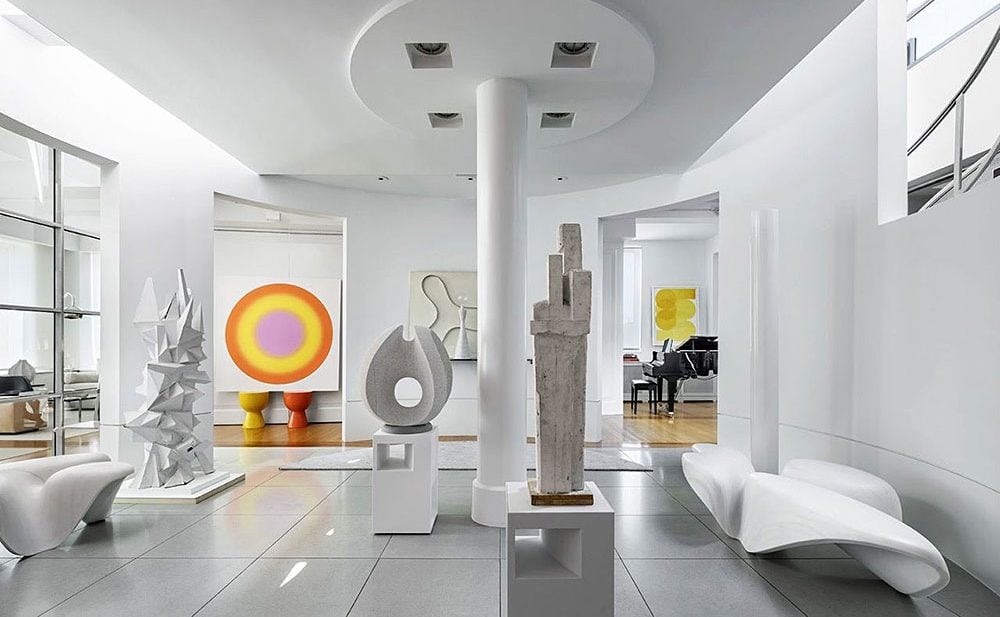
Lee Mindel’s apartment, featuring Beat Bühler (foreground), Zaha Hadid benches, Irving Harper, and Ugo Rondinone. Photo: Michael Moran. Courtesy of Lee Mindel.
Recently, the Harvard-trained architect contributed to Herzog & de Meuron’s amusingly blocky high-rise at 56 Leonard in Tribeca. Within the so-called Jenga Tower, Mindel also carved out a home for himself, a 3,000-square-foot light-drenched aerie that overlooks Anish Kapoor’s “bean” sculpture wedged into the base of the building. The space bursts with his personal collection of modern and contemporary design and art, ranging from Zaha Hadid and Isamu Noguchi to Ai Weiwei and Alexander Liberman.
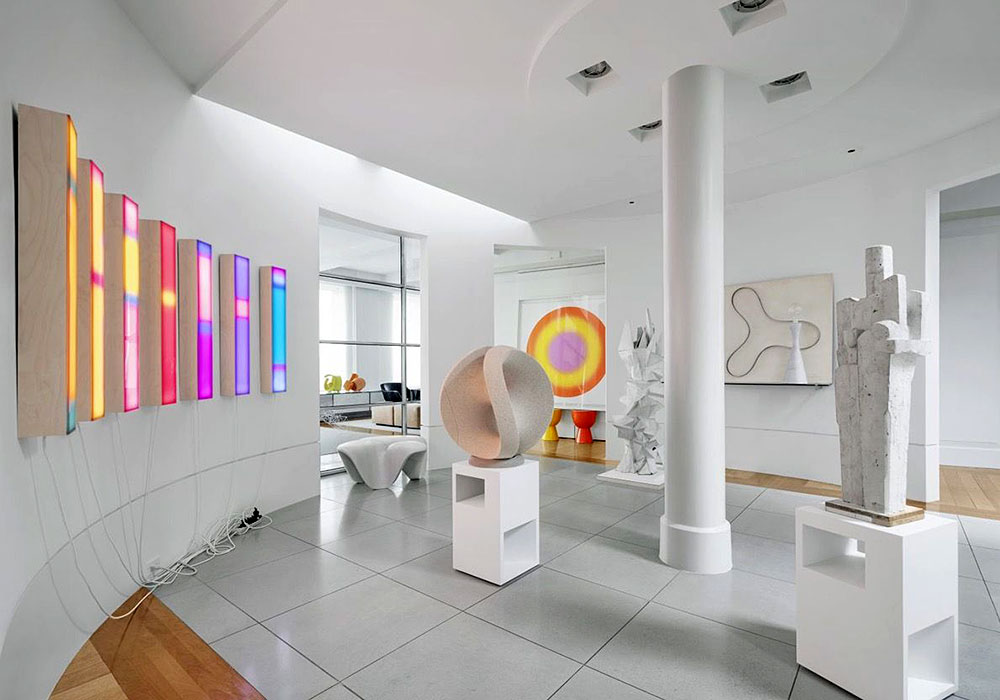
Lee Mindel’s apartment, with a neon-light installation by South African artist Floor van de Velde. Photo: Michael Moran. Courtesy of Lee Mindel.
More of Mindel’s collection can be found in his new art space, Galerie56, on the ground floor, where he’s currently exhibiting drawings by Italian artist and designer Gaetano Pesce, and will soon open a solo show of sculptures by South African ceramic artist Zizipho Poswa. Mindel’s Miami home and a new residence that he designed and built in Southampton—in collaboration with Reed Morrison (a Harvard classmate)—house still more of his acquisitions.
We caught up with Mindel for a glimpse into his sprawling collection.
What was your first purchase?
During a work trip to London, I discovered a gallery on Westbourne Grove that had just opened called Themes and Variations, by owners Lilian Fawcett and the late Giuliana Medda. They represented the works of iconic Italian designer Piero Fornasetti, whose Capitol Chair had just appeared on the cover The World of Interiors. I acquired a three-part screen, which was a part of Fornesatti’s 32-piece Metaphysical Room, and took it back with me on a flight to New York.

A portion of Piero Fornasetti’s Metaphysical Room, seen in Trudie Styler and Sting’s New York City home. Photo: Michael Moran. Courtesy of Lee Mindel.
Many years later, I could have never imagined that Shelton Mindel would acquire the entire Metaphysical Room and create a 75-foot-long triptych of the works for the residence of Trudie Styler and Sting. It has since relocated to a residence in Marin County.
What was your most recent purchase?
A sculpture by South African artist Zizipho Poswa from the series “Pillars of the Nation.” Her work serves as a metaphor for what African women carry on their head for survival, both physically and mentally.

Zizipho Poswa, Umthwalo (2022). Photo: Hayden Phipps & Southern Guild. Courtesy of Lee Mindel.
Tell us about a favorite work in your collection.
It’s not an artwork, but I love the tree garden on my Manhattan loft rooftop, where I have a large aluminum sculpture by Marc Fornes.

The tree garden atop Lee Mindel’s Manhattan apartment. Photo: Michael Moran. Courtesy of Lee Mindel.
Which works or artists are you hoping to add to your collection this year?
I am interested in supporting living artists, as well as those who have made a substantial contribution to our culture. I believe the best is yet to come.
What is the most expensive work of art that you own?
As an architect, I had the opportunity to design and build a residence by the water in North Sea, Southhampton, which houses much of my collection.
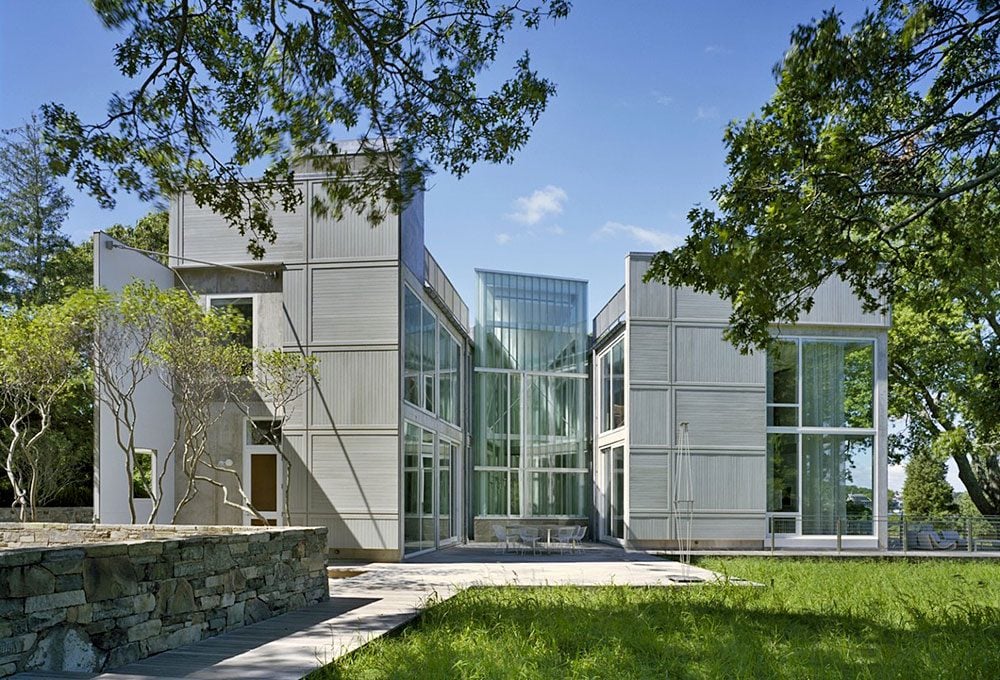
North Sea residence. Courtesy of Lee Mindel.
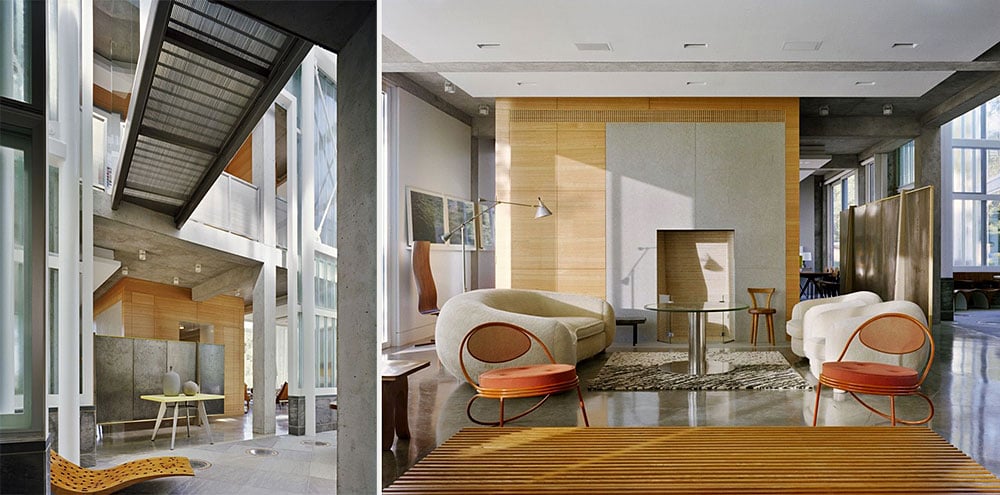
North Sea residence. Courtesy of Lee Mindel.
Where do you buy art most frequently?
As chair of the vetting committee of Design Miami Basel and Design Miami, I am lucky to be exposed to so many opportunities. In addition, the projects by our architecture firm Shelton Mindel are in numerous places, which provides us with countless opportunities to explore different kinds of art and design.
Is there a work you regret purchasing?
Never.

Gisela Colon’s wall sculpture. Photo: Michael Moran. Courtesy of Lee Mindel.
What work do you have hanging above your sofa?
In the Miami residence, there is a three-dimensional luminescent sculpture by American artist Gisela Colon, which evokes the dynamic bioluminescence and shimmer of the sea.
What about in your bathroom?
A glass sculpture by Japanese architect Tadao Ando.
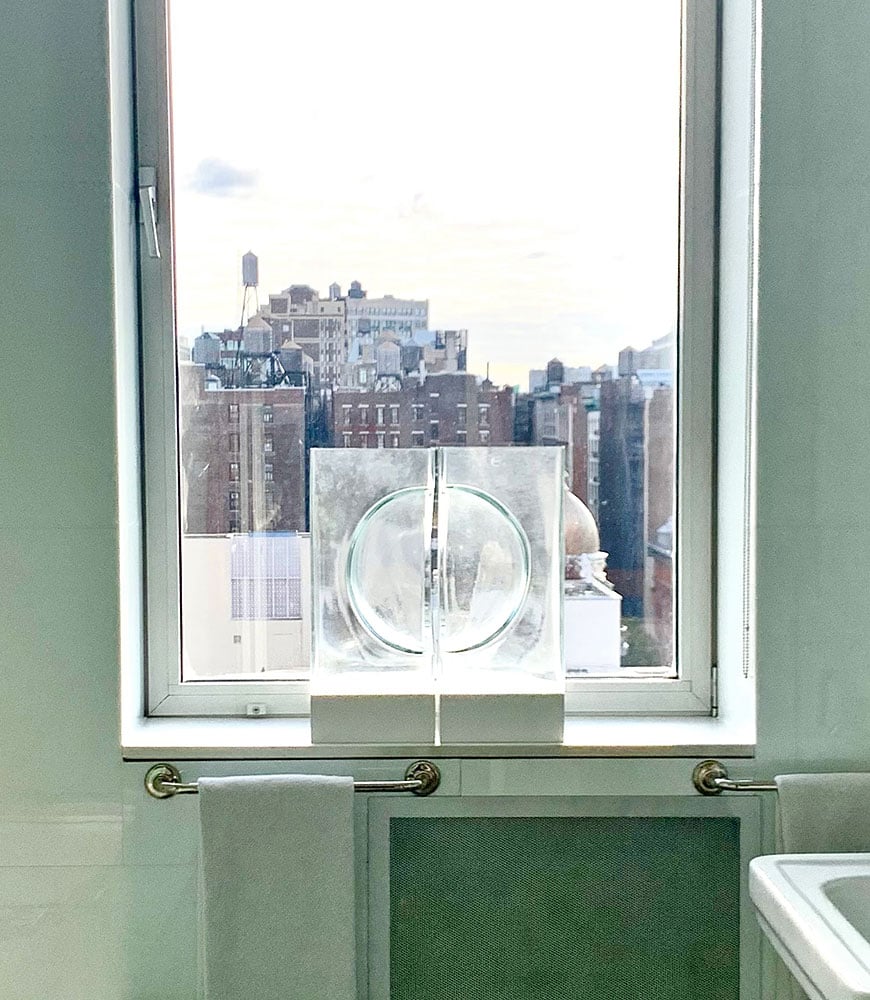
Tadao Ando sculpture in Lee Mindel’s home. Photo: Lee Mindel.
What work do you wish you had bought when you had the chance?
A large-scale console and room divider by Italian midcentury designer Carlo Mollino, which I saw 25 years ago.
If you could steal one work of art without getting caught, what would it be?
The thing I would like to acquire the most is time.





